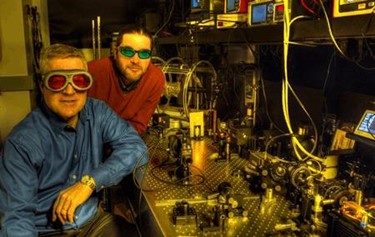NASA Readies World's First Spaceborne Sodium LIDAR System
By Jof Enriquez,
Follow me on Twitter @jofenriq

Scientists at NASA’s Goddard Space Flight Center are developing the world's first space-based sodium LIDAR (Light Detection And Ranging) instrument to study the nature and dynamics of the mesosphere, the poorly understood middle layer of the Earth's atmosphere, which lies 40-100 miles above Earth’s surface and separates the planet from the vacuum of space.
LIDAR is fundamentally a remote sensing technology that works like radar, but uses light pulses instead of microwaves to measure variable distances in natural and man-made environments. It has many applications, including NASA's Sounders greenhouse gases detection program, which was designed to measure carbon dioxide and methane in Earth’s atmosphere.
Building on expertise honed through that program, along with four decades of experience in using ground-based sodium LIDAR instruments, NASA now plans to deploy the world's first spaceborne sodium LIDAR to study the mesosphere, which contains a relative abundance of sodium.
"Instead of carbon dioxide and methane, we’re detecting sodium because of what it can tell us about the small-scale dynamics occurring in the mesosphere," said scientist Diego Janches.
Still in development with funding from NASA’s Center Innovation Fund and the Heliophysics Technology and Instrument Development for Science programs, the LIDAR instrument will be tuned to the 589-nanometer range, or yellow light. When finally deployed to orbit, it will beam laser pulses at the mesospheric layer, down one to three kilometers, over an area that is four to eight kilometers wide.
"When you shoot yellow light into the region, the light bounces off the sodium particles, causing them to resonate, or glow. By detecting the glow-back, you can measure how much sodium is in the mesosphere, its temperature, and the speed at which it's moving," explained Janches.
The team plans to test the LIDAR system's laser to elevate its technology readiness level (TRL) to six, which in NASA's parlance means making a fully functional prototype or representational model demonstrated in a relevant environment (in this case, in space).
"We’ve made significant progress on the laser,” said laser expert Mike Krainak, who, along with fellow team member Tony Yu, also worked on the laser. “If we win, we could be the first space-based sodium laser spectrometer for remote sensing."
Yu and other colleagues also are developing a next-generation 3D scanning LIDAR called the Goddard Reconfigurable Solid-state Scanning LIDAR (GRSSLi), which is designed to generate real-time images needed to guide spacecraft to a target, such as a comet or asteroid, traveling at thousands of miles per hour.
